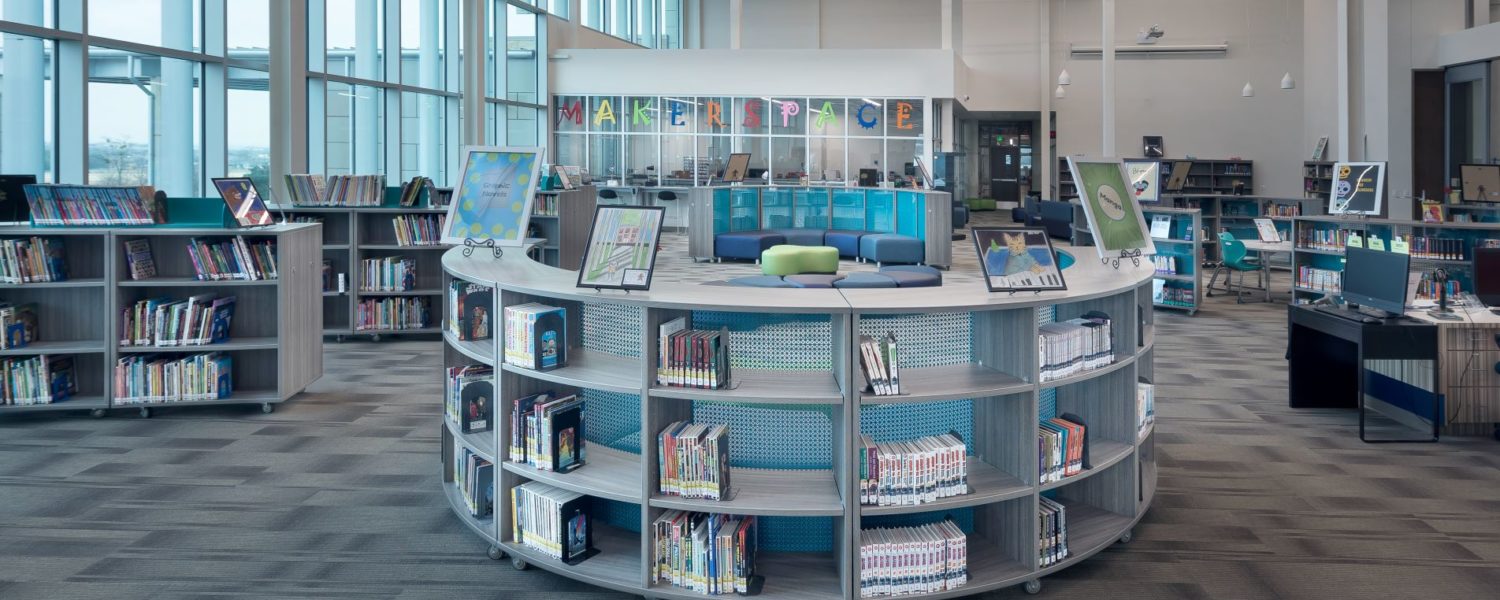Libraries have changed dramatically. No longer are they exclusively furnished with tall, static bookshelves. In many schools, this space has morphed into a multi-media center where students research, discover and explore their ideas.
Media centers are the hub of the school. These are now flexible spaces that accommodate technology, teaching and versatile student or community groupings.
Focus on providing furnishings that allow students and staff to be comfortable, tech accessible, with easy access to resources.
As you’re planning your media center or library, think about what you are trying to accomplish, how it will be used, where it will be located and how it will integrate with the grade level or learning community.
Here are some questions to help guide your discussions and ultimately the best ways to set up your environment.
What is the focus of the space?
- Lounge area?
- Technology?
- Café space?
- Literature space and availability?
How will the space be used?
- Flexible spaces for students to group
- Guided instruction groups
- Large group instruction
- Student presentation in small and/or large groups
- One to one technology devices
- Community events
- Parent meetings
Do you have storage needs?
- Do they need to lock?
- What will be the weight requirements?
What constraints do you have in the room?
- Electrical
- Water fountain/Sinks/Bathrooms
- Built in cabinets
- Stationary technology (Desktop computing systems, interactive whiteboard)
- Doors/Windows
Any Space Can Be a Media Center
Media center or makerspace? Today it can be both, bringing technology, resources and the right collaborative furniture solutions together in one space.
Media-rich centers provide new opportunities for creativity. Blending print collections and media resources gives space to move. Flexible and mobile furnishings eliminate barriers. Tables and shelving on casters let you change on the fly.
This physical space adapts to the needs of the occupants instead of the other way around.
A blended space allows for teaching and learning zones. Use shelving for print materials, mobile or stationary, to break up the space without creating visual barriers.
Use standing and sitting height tables and adaptable seating to set up quiet reading spaces, café areas for comfortable collaboration, media stations for online activities, as well as traditional instruction zones.
The center of school life, what was once the library, is now a space for collaboration and large group meetings, often involving both campus and community participants.
Whether you need space to instruct, present, group work or study, a simple furniture solution accommodates both books and people, and it can be reconfigured from small groups to large ones.
How Long Should School Furniture Last?
When you purchase school and classroom furniture, you want it to last! We understand! It’s why we often receive the question, “How long does your school furniture last?”
When it comes to making a major investment—like school furniture—here are three things you should consider before making your final purchase.
- Product testing
One of the most important things you can look into is whether the school furniture manufacturer tests its products to meet minimum quality and safety standards. While there aren’t really any specific standards school furniture must meet, reputable school furniture manufacturers use BIFMA (Building Industry Furniture Manufacturers Association) as a standard. BIFMA is testing standards that were developed for office furniture to ensure durability.
- Testimonials
As you look to determine the right school furniture manufacturer to partner with, do your research! What companies are other schools using and did they have a good experience? Were they satisfied with the customer service and the products? Did the furniture stand the test of the students using it?
Your school furniture dealer should be able to provide you with references and testimonials. You can also visit the manufacturer’s website to look at case studies.
- Warranty
While warranties vary widely, they can be an indication of whether the classroom furniture manufacturer stands behind its product.
While we’re seeing a sea-change inside schools when it comes to school furnishings—moving to more active and collaborative spaces—we also realize that most schools don’t have the luxury of changing out their furniture regularly.
Find the balance between durability and lifetime use, but don’t sacrifice either for fashion.
This information is courtesy of Artcobell, whose classroom furniture has enabled teachers to inspire and motivate five generations of students, www.artcobell.com.










